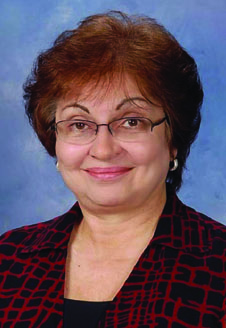By Sr. Mary Garascia, PhD
 A parish dad invited a pastor friend of mine to dine with his family. After dinner the parents said to their children, “Come into the living room; we have a surprise for you.”
A parish dad invited a pastor friend of mine to dine with his family. After dinner the parents said to their children, “Come into the living room; we have a surprise for you.”
From a fancy shopping bag they pulled out superhero tee shirts and gave each child their favorite one. Then they said, “Oh look, there’s an extra one in here!”
It did not take long for the children to guess that the extra little tee shirt was for a new expected baby, to be born near Christmas. ”So what do you want this time, a boy or a girl?” the Dad asked. Starting with the oldest child, they each gave their preference. Then it was the youngest child’s turn. The sturdy four-year-old boy looked his Dad firmly in the eye and proclaimed: “I want a truck!”
Do we want the kind of God we celebrate each Christmas, or would we rather have a truck? In Jesus’ day, it seems people projected their wishes on to Jesus, and they had a hard time accepting the kind of Jesus they really got. Some wanted him to be a messiah who would overcome oppressors and be a king. Others only followed Jesus for the signs he did, his healings, especially miracles when he raised someone from the dead; just like us they didn’t want to be disabled or sick or dead. Still others who flocked to Jesus wanted “stuff”—like food he provided in the multiplication miracles. In the end Jesus was taunted by bystanders, and by one of the criminals on a cross near him, for being weak, for having to die instead of having his Father rescue him.
The infant in the crib tells us about the God we really get. The baby also tells us about ourselves and affirms our Catholic spirituality. Incarnation, God taking a body, means God has skin in the game of being human.
We humans are embodied. But we struggle with our bodies even as we also exult in them. Our bodies are messy things, especially in infancy and in old age. They give us pleasure but also pain, and in the end, they die. At times in our Catholic spirituality we fell into erroneous ideas about the body, like dualism and Jansenism; we condemned the body for being the source of sin, especially sexual sin, and taught that the body was a “lower nature,” less noble than our souls or spirits. In our day we go to great lengths to disguise the aging of our bodies.
Jesus was a baby. Christmas reminds us that he had a real human body. He was born in the usual pain and mess of childbirth. He went through all the body stages we go through in the transition from childhood to adulthood. He got tired and fell asleep in a boat; he got hungry and picked grain with his disciples on a Sabbath day. He felt pain when tortured, and he struggled to let go of his embodied self when it was his time, just like we do. Ronald Rolheiser says that when we idealize and spiritualize Christmas, we miss its meaning: … that God is born into our material world and takes on a human body blesses and sanctifies the physical world and our own bodies…[so] that we can find meaning and salvation without having to denigrate either our bodies or the physical world. (The Earthiness of Christmas, December 26, 2004).
God embodied in a baby is a good news revelation for us! It reveals that the spiritual and the material aspects of our lives are not opposed but work together, that the divine and the human are part of a whole, that our life and our world is also God’s life and world. In the beginning of Matthew’s Gospel we hear: “…and they shall name him Emmanuel, which means God is with us (Matt 1:23),” and at the end of that Gospel, “…I will be with you always, until the end of the age (Matt 28:20).”
This indwelling of God in the body of Jesus is not limited to first century Palestine but continues forever in every instance of the ongoing creation of our world. We humans only can know and understand through the senses of our bodies. We enter into relationships with others through our bodies. Our souls experience and communicate through our bodies, and that includes our communications with God, and God’s with us. God uses material stuff to touch us at every Eucharist; this is my body, given for you. And as we interact with God and one another in faith, we become the body of Christ, the ecclesial community.
This is the God we get in the baby of Christmas. This God is not a bulldozer God, moving obstacles out of our path, burying those who harm us, or shielding us from life’s inevitable calamities. There are times when I really want that truck kind of God! Instead our Christmas God invites me and all of us to embrace God-with-us in our very bodies, in all the human embodied experiences we have, in our relationships with each another and with our world. Everything is not pretty or perfect or complete in our lives or our world. But In the words of that great Peter Mayer song, we know that everything is holy now because of the baby. Merry Christmas!
Sister Mary Garascia, PhD (Theology), is a member of the Sisters of the Precious Blood of Dayton Ohio, where she now resides. Until recently she lived and ministered at The Holy Name of Jesus in Redlands. You can follow her weekly Sunday scripture blogs at PreciousBloodSistersDayton.org.

